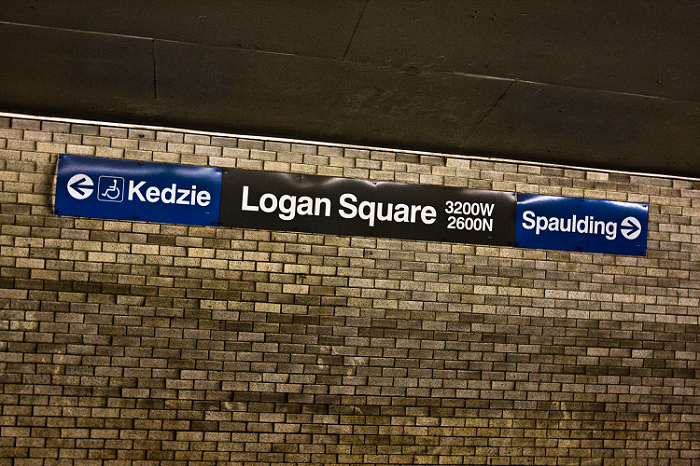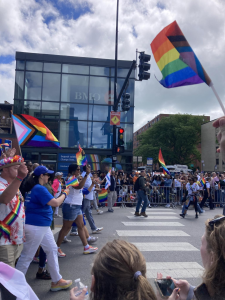The Case of Who Is Logan Square
Gentrification often splits a neighborhood in two directions, high income moves in, low income moves out.
February 1, 2015
When it comes to Chicago’s historic neighborhoods, some city-dwellers think the concept of place is one that ought to be preserved against the forces of the market — and against the complex phenomenon of urban gentrification.
The grassroots organizers of the group We Are/Somos Logan Square held a series of four discussions on the multi-faceted issue of gentrification from Jan. 14-24, in order to be able to effectively build up their neighborhood in addressing a wide variety of concerns. The series featured speakers from the community as well as academic professionals from nearby universities.
Amie Sell, outreach coordinator for We Are/Somos Logan Square said, “Gentrification is a very layered conversation …after a panel event we had on Avondale Avenue, [in the Logan Square neighborhood] … a lot of people came back and said, ‘Wait, we need to talk more about this. We need to understand things a little more.’”
The discussions were informative and covered multiple topics from the basics and history of gentrification to how the economic phenomenon is deeply intertwined with racism and classism.
In a piece for AREA Chicago online, NEIU professor of anthropology Jesse Mumm (who spoke at the We Are/Somos discussions) defines gentrification as “the revaluation and reshaping of urban space by more affluent newcomers who displace lower income predecessors.”
The property value of buildings can raise on the basis that other property around it is developed by real estate developers, leading to increases in rent and lower-income tenants to be displaced – simultaneously, new residents attracted to new development (who can afford the increases in rent) move in.
The church of Pastor Erik Christensen, St. Luke’s Lutheran Church of Logan Square, served as the venue for one of the gentrification series discussions on Saturday, Jan. 17.
Christensen reacted positively to the speakers’ contributions to the discussions.
“The speakers did a great job today of naming that gentrification is driven by a process of valuation, and that valuation is actually a social construct … Gentrification is at its core driven by an engine that works because it says some people and some neighborhoods are worth more than others.”
Historically, the process of gentrification began as early as the 1950s and 1960s. Socially contributing factors have included the growth of the creative class and the movement of the middle-class, college-educated from the suburbs back to urban areas, and culturally, factors have included the popularization of certain lifestyle ideals such as loft living, authenticity of place and preservation of neighborhoods.
In Mumm’s presentation on gentrification he tells that the preservation of neighborhoods is not for “the poorest and most marginalized blacks and Latinos in cities like Chicago,” who are pushed out of neighborhoods by gentrification.
To counter the process, voices such as Latino United Community Housing Association (LUCHA) are resisting. For example, they advocate zoning changes in order to build affordable housing developments such as Tierra Linda, which could provide rental housing for families earning 50 percent or below Area Median Income (AMI) near the soon-to-open, The 606.
The 606 is a park and trail system that will be built along the inactive Bloomingdale Line (which runs through the neighborhoods of Wicker Park, Bucktown, Humboldt Park, and Logan Square), the exact kind of attractive urban development that will draw higher-income residents who can afford the raised property values of nearby real estate to previously less lush locations. The first phase of the park system is to be completed in June 2015.
Christensen believes gentrification is not something “that we can resist individually. It’s one that requires voluntary association or, ‘getting organized’ … the resistance to that requires some sort of a body that is larger than one person that can say, ‘No, we have a different way of valuing a person.’”
“We say, ‘no, a human life has inherent value, which is neither more nor less than any other human life,’ and so, any kind of economy that exists on the process of devaluing human lives needs to be resisted.”







